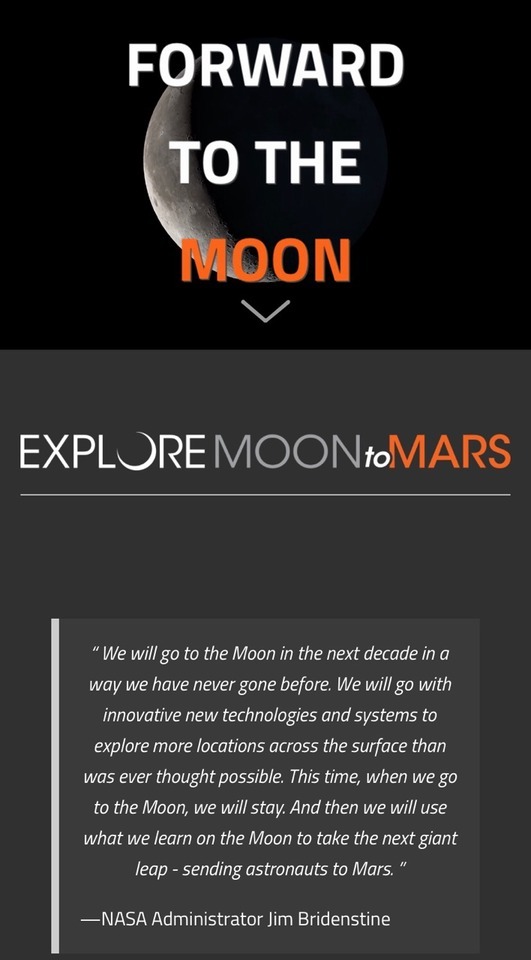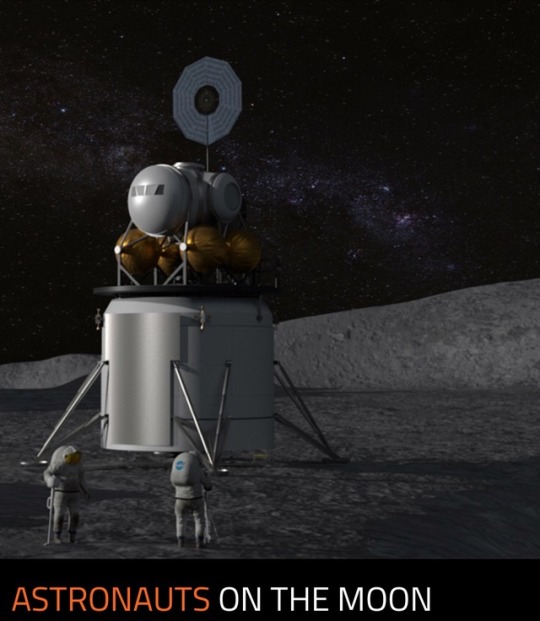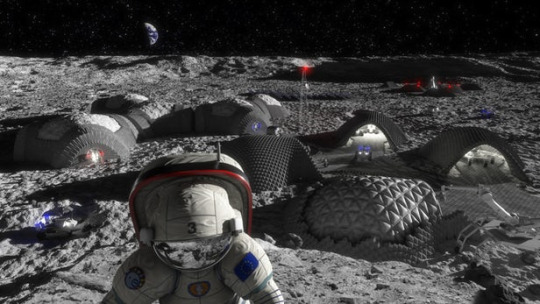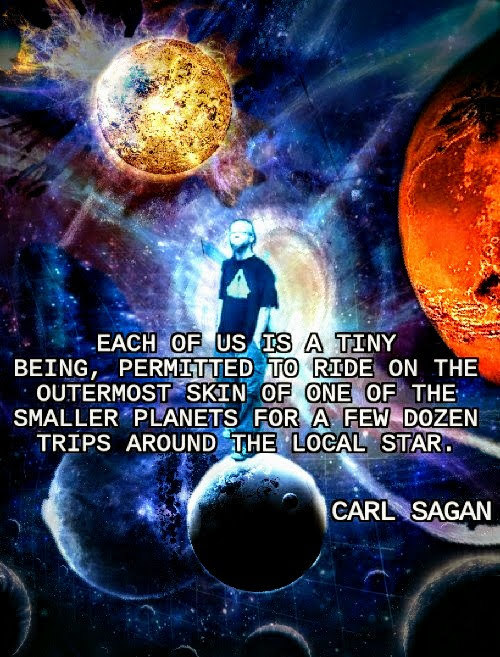#moon2mars
Text

#IFTTT#Flickr#nasa#marshallspaceflightcenter#msfc#rocket#space#artemis#spacelaunchsystem#moon2mars#michoudassemblyfacility#artemisiii
52 notes
·
View notes
Text

#IFTTT#Flickr#nasa#marshallspaceflightcenter#msfc#rocket#space#artemis#spacelaunchsystem#moon2mars#rocketengine#orion
7 notes
·
View notes
Text

#IFTTT#Flickr#nasa#marshallspaceflightcenter#msfc#rocket#space#artemis#spacelaunchsystem#moon2mars#rocketengine
0 notes
Text
NASA shares first Moon to Mars Architecture Concept review results
nasas-updated-moon2mars-strategy-and-objectivesNASA’S MOON TO MARS STRATEGY AND OBJECTIVES DEVELOPMENTDescarregar
As NASA builds a blueprint for human exploration throughout the solar system for the benefit of humanity, the agency released Tuesday the outcomes from its first Architecture Concept Review, a robust analysis process designed to align NASA’s Moon to Mars exploration strategy and…
View On WordPress
0 notes
Text
Space Center Houston celebrates Artemis with new exhibit, Moon2Mars festival - Space June 10, 2022 - Space Saturday June 11, 2022
Space Center Houston celebrates Artemis with new exhibit, Moon2Mars festival – Space June 10, 2022 – Space Saturday June 11, 2022
I saw this recently on Space.com – Space Center Houston celebrates Artemis with new exhibit, Moon2Mars festival: https://www.space.com/artemis-moon2mars-festival-space-center-houston/ Longer article.
By Robert Z. Pearlman June 10, 2002
Festival open to the public Friday through Sunday, June 10-12.
NASA’s Artemis program has inspired a new exhibit and annual festival at the agency’s Texas…
View On WordPress
0 notes
Text
You’ve Heard “Houston, we’ve had a problem,” But Do You Know The Mission It’s From?
It’s the 50th anniversary of the Apollo 13 mission! NASA’s “successful failure,”Apollo 13 was to be the third lunar landing attempt, but the mission was aborted mid-flight after the rupture of a service module oxygen tank. The crew never landed on the moon, but due to the dedication and ingenuity of Mission Control, made it back to Earth safely. We’ve put some of the most important numbers of the Apollo 13 mission in perspective. Check it out!









Listen to the mission in real time, HERE.
Follow NASA History on Twitter and Facebook for more interesting information about aerospace history!
Check out the stats of all the Apollo Missions in the free e-book Apollo by the Numbers, HERE.
#Apollo 13#Apollo50th#Moon2Mars#ApolloByTheNumbers#Apollo13NOW#NASAHistory#history#space#spaceflight
3K notes
·
View notes
Video
RS-25 Rocket Engines Return to Launch NASA’s Artemis Moon Missions by NASA's Marshall Space Flight Center
Via Flickr:
The rocket engine with one of the most storied histories in spaceflight, the RS-25, is returning to space for a second act – this time to send humans on the Artemis missions to explore the Moon. As the space shuttle main engine, the RS-25 has a proven record of launching 135 missions spanning over three decades. At the end of the shuttle program in 2011, 16 RS-25 engines that helped build NASA’s International Space Station and deploy the Hubble Space Telescope, among other achievements, were stored away. When NASA began scouting engines to power America’s next super heavy-lift rocket, the Space Launch System (SLS), the RS-25 offered an opportunity to forgo costs of developing a new engine, and the ability to leverage the assets, capabilities, and experience of the Space Shuttle Program. Seen here in the RS-25 assembly deck at Aerojet Rocketdyne’s facility, located at NASA’s Stennis Space Center in Mississippi, are main engines 2057 and 2054, which will fly on the Artemis III crewed lunar mission. Credit: Aerojet Rocketdyne #NASA #space #moon #Mars #NASAMarshall #msfc #sls #spacelaunchsystem #nasasls #rockets #exploration #engineering #explore #rocketscience #artemis #SSC #StennisSpaceCenter Read more More about Artemis More about SLS NASA Media Usage Guidelines
#NASA#Marshall Space Flight Center#MSFC#rocket#space#Artemis#Space Launch System#Moon2Mars#rocket engine#Stennis Space Center#SSC
1 note
·
View note
Video
Release and Retract Test Marks Artemis I Mission Milestone by NASA's Marshall Space Flight Center
Via Flickr:
Engineers with Exploration Ground Systems and contractor Jacobs successfully completed the Umbilical Release and Retract Test on Sept. 19 inside the Vehicle Assembly Building (VAB) at NASA’s Kennedy Space Center in preparation for the Artemis I mission. The umbilicals will provide power, communications, coolant, and fuel to the rocket and the Orion spacecraft while at the launch pad until they disconnect and retract at ignition and liftoff. This is a close-up view of the Artemis I Space Launch System rocket inside High Bay 3 of the Vehicle Assembly Building at NASA’s Kennedy Space Center in Florida on Sept. 20, 2021. All 10 levels of work platforms have been retracted from around the rocket as part of the umbilical release and retract test. During the test, several umbilical arms on the mobile launcher were extended to connect to the SLS rocket and then swung away from the launch vehicle, just as they will on launch day. Artemis I will be the first integrated test of the SLS and Orion spacecraft. In later missions, NASA will land the first woman and the first person of color on the surface of the Moon, paving the way for a long-term lunar presence and serving as a steppingstone on the way to Mars. Photo credit: NASA/Frank Michaux Image Credit: NASA/Frank Michaux #NASA #space #moon #Mars #Moon2Mars #MoontoMars #NASAMarshall #msfc #sls #spacelaunchsystem #nasasls #rockets #exploration #engineering #explore #rocketscience #artemis #Orion #KSC #KennedySpaceCenter #ArtemisI Read more More about Artemis More about SLS NASA Media Usage Guidelines
#NASA#Marshall Space Flight Center#MSFC#rocket#space#Artemis#Space Launch System#Moon2Mars#Moon#Mars#Moon to Mars#rocket engine#Orion#KSC#Kennedy Space Center#Artemis I
0 notes
Video
The Red Planet's Holden Crater by NASA's Marshall Space Flight Center
Via Flickr:
Much of Mars is covered by sand and dust but in some places stacks of sedimentary layers are visible. In this image, exquisite layering is revealed emerging from the sand in southern Holden Crater. Sequences like these offer a window into Mars' complicated geologic history. Holden Crater was once a candidate landing area for the Curiosity, Mars Science Laboratory, and is still an intriguing choice today. Image Credit: NASA/JPL-Caltech/University of Arizona #NASA #jpl #jetpropulsionlaboratory #marshallspaceflightcenter #msfc #mars #moontomars #planet #space Read more More about Curiosity Rover NASA Media Usage Guidelines
#JPL#Jet Propulsion Laboratory#Marshall Space Flight Center#MSFC#Solar System and Beyond#Moon2Mars#planet#Mars#Now Playing#21st#September#2020#September 21st 2020
0 notes
Photo

Once upon a time, a wife/mom/space enthusiast got to attend the #Moon2Mars event at @nasa_langley . She then got to take this photo with two very cool people who helped make this momentous day happen, and she was very happy. The end. 😄 Thanks Natalie and Andrea @learnloudly for making this a very special #nasasocial event for me and for the entire group!! (at NASA Langley Research Center) https://www.instagram.com/p/Bw9eTcGnkiL/?utm_source=ig_tumblr_share&igshid=kh361i47bivq
0 notes
Text

#IFTTT#Flickr#nasa#nasasmarshallspaceflightcenter#nasamarshall#marshall#msfc#centennialchallenges#cubequest#rocket#space#artemis#spacelaunchsystem#moon2mars#artemisi
23 notes
·
View notes
Photo

@NASA is a step closer to sending astronauts back to the Moon #Moon2Mars following a successful RS-25 engine test on Thursday at @NASAStennis. . . . . #NASA #NASASocial #humanspacecraft #nasalangley #spacefans #space #iss #instapilot #pilot #pilotlife #plane #instaviation #planeporn #boeing #airbus #jet #airliners #flying #Aviation #NASAMoon #AviationLover #sky #flywithaopa #instapilot #spacex https://www.instagram.com/dullnathan/p/Bv4GlsOFXVy/?utm_source=ig_tumblr_share&igshid=1d7em7edx3vmx
#moon2mars#nasa#nasasocial#humanspacecraft#nasalangley#spacefans#space#iss#instapilot#pilot#pilotlife#plane#instaviation#planeporn#boeing#airbus#jet#airliners#flying#aviation#nasamoon#aviationlover#sky#flywithaopa#spacex
0 notes
Photo

Nasa: torneremo sulla Luna per andare su Marte Questi gli ambiziosi obiettivi dell'Agenzia spaziale americana in questi prossimi anni: tornare sulla Luna, costruire della basi abitabili, partire per l'esplorazione di Marte con equipaggio umano.
#Moon2Mars#2024#astronauti#aziende#basi#centofanti#direttore#economia#era#esplorazione#fede#hastag#insediamenti#istituzioni#luna#lunare#marte#missione#nasa#paolo#pianeta#ragione#satellite#spaziale#sperimentazioni#tempo#umana#umani
0 notes
Text
🌕🛰 Moon to Mars! 🚀🔴
“We choose to go to the moon in this decade and do the other things, not because they are easy, but because they are hard, because that goal will serve to organize and measure the best of our energies and skills, because that challenge is one that we are willing to accept, one we are unwilling to postpone, and one which we intend to win, and the others, too.”

Over 50 years ago, President John F. Kennedy made that speech at Rice University. Today, NASA Administrator Jim Bridenstine echoed that sentiment in a press conference regarding NASA’s Moon to Mars objective.




Learn more here:
0 notes
Text
How we can build a moon base today
If wanting to leave this planet has always been your dream, then you might be in luck.
By 2024 the National Aeronautics and Space Administration (NASA) plans on establishing an outpost on the moon. Unlike the previous lunar missions, the astronauts who will participate in this expedition will likely stay there indefinitely. The Artemis mission (Artemis was the twin sister of Apollo and goddess of the Moon in Greek mythology) will also deliver the first woman on the moon.
But why should we go back to the moon?
Building a lunar base can benefit our life on earth in multiple ways.
First of all the achievement of building such a complex structure out of the comfort of our planet will be an inspiration for generations to come, not only for young aspiring scientists and engineers, but also for the political leaders of the future. By making this an international effort, this mission will be an example of what humanity is capable of when working together on a common goal.

Artist’s interpretation of a lunar outpost
Secondly, the outpost will serve as a hub for future travels to Mars and other planets. Making humanity independent from Earth is essential for the survival of our species in the future. The Moon has less gravity to overcome and no atmosphere. This means that larger loads can be transported into our Milky Way with less fuel compared to Earth.
Finally, it would create a vast array of new technologies that would also benefit the people on Earth.
How would we do it then?
Today we have the technology to establish a moon base. At first this base will still be reliant on Earth for basic resources. The moon is a very hostile place to live. The people who will be living there will need constant air supply, a steady source of water and protection from cosmic radiation. Since the Apollo program, satellites have been mapping the moon and lunar rovers have analysed the composition of the soil. With all this information in mind, we basically know everything we need to know to establish a first outpost. The first crew of astronauts will consist of scientists and engineers who will try to develop ways of using the available lunar material. Lunar dust could be used for building materials and purifying the lunar ice could produce water for human consumption. Water is critical, not only for drinking, but also for experiments with growing plants for food. Electricity can be stored in hydrogen fuel cells and water can also be split into hydrogen and oxygen, used for rocket fuel.
Recent estimates from NASA and the private sector suggest that a moon base can be build for 20 to 40 billion dollars, spread over ten years. This is about the cost of the International Space Station. It is a big investment, but just imagine what the payoff could be. Over time the moon outpost will expand in a colony which is self-reliant for the most part. This means a whole new space economy will emerge built on mining, tourism and scientific research. The Moon will not only be a place for scientists and engineers, but also for merchants and entrepreneurs.
NASA could definetely fly me to the moon, how about you?
SOURCES:
https://www.youtube.com/watch?v=NtQkz0aRDe8
https://www.csis.org/analysis/costs-international-lunar-base
https://www.nasa.gov/specials/moon2mars/#top
https://www.space.com/30008-moon-colony-cost-commercial-space-report.html
https://www.businessinsider.nl/nasa-estimates-20-billion-30-billion-cost-people-moon-2024-2019-6?international=true&r=US
https://www.businessinsider.nl/nasa-artemis-moon-base-apollo-space-rocket-sls-2019-9?international=true&r=US
6 notes
·
View notes


